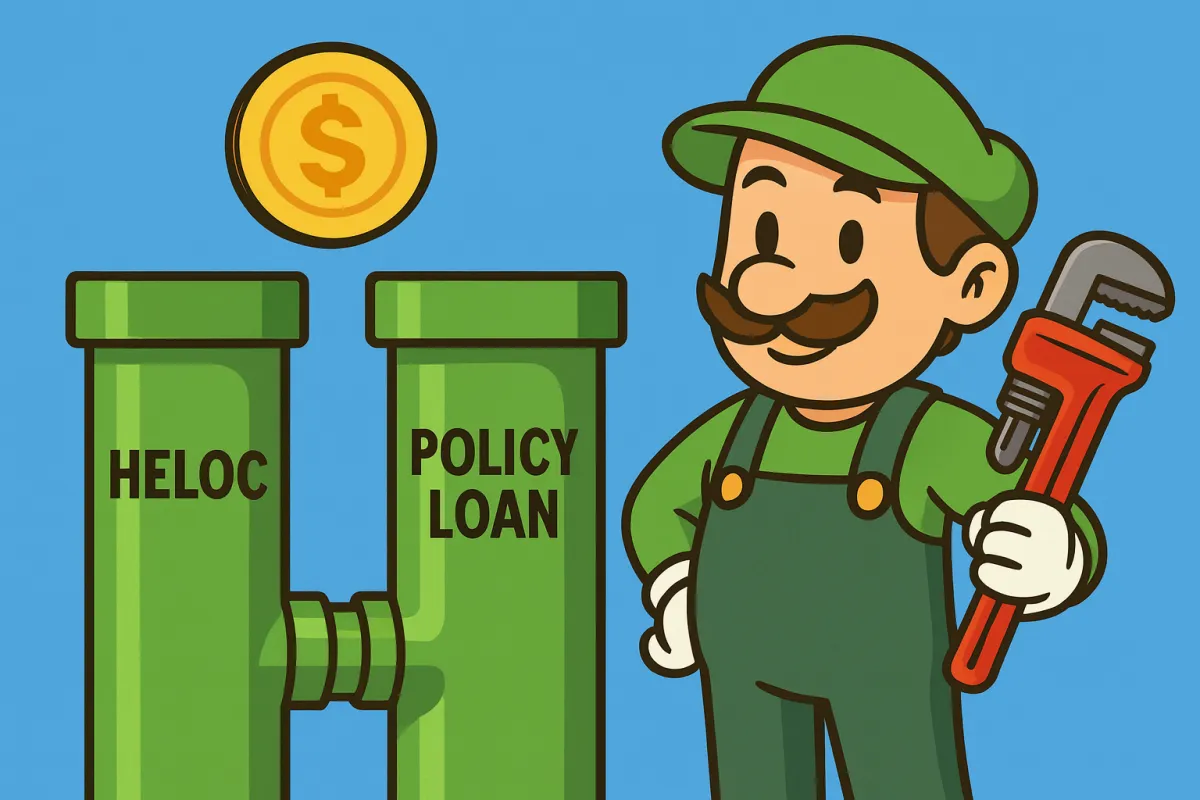
The Two-Line Cash-Flow Playbook: Managing Credit Like Mario Fixes Pipes
A line of credit is not free money. It feels like it when the balance shows up, but it is not. It is a tool. And like a wrench in the wrong hands, you can fix the leak or you can flood the basement.
Now picture this like a Mario level. You are the plumber. You have two pipes that move money:
HELOC (your home equity line of credit)
Policy Loan (borrowing against your life insurance cash value)
Each pipe can either keep your system flowing smoothly or dump you into a pit of Goombas. The trick is knowing which pipe to jump down and when.
Why Even Use Two Lines of Credit
HELOC: This pipe is tied to your house. Rates move with the market. One wrong move and the bank plays Bowser.
Policy Loan: This pipe is smoother. You borrow against your cash value, and your money keeps growing as if you never touched it. It is like finding a secret warp zone.
Both pipes are useful. Both have hazards. Ignore that and you are out of lives fast.
The Danger Zone: Over-Leverage
This is where most players blow it. They start thinking two lines of credit equals unlimited coins. Wrong.
The question is not “how much can I borrow” but “how much can I manage before I get eaten by a Piranha Plant.” That is your Loan-to-Value (LTV) comfort zone.
On a HELOC, maybe you keep it around 50 percent
On a policy loan, maybe you are comfortable going up to 80 percent
Push past those limits and you are not leveling up. You are just waiting for Game Over.
The Playbook: Mario Style
Here is how you run your cash flow like a pro plumber:
All coins (income) drop into the HELOC pipe first. That is your main hub.
Use HELOC flow to pay policy loan interest. One pipe feeds the other.
Practice “self-amortization.” Translation: stash coins in a high-yield savings account, then send them back through on a repayment schedule. Think of it like practicing jumps before you go for the boss fight.
Only re-deploy coins when the return is bigger than the cost. If the math is not in your favor, do not press start.
The rhythm is simple. Coins in → HELOC pipe → cover policy loan → repayments loop through high-yield savings → new investment only if ROI beats the cost.
Why This Works
Because it keeps your system flowing like a well-built level. You are borrowing cheap, paying smart, and staying liquid.
HELOC is the main pipe that carries the flow
Policy loan is the bonus pipe that gives you extra coins
Income is the stream running through both
When they play together, it is smooth gameplay. When they are out of sync, it is lava time.
The Bucket Diagram (Picture the Pipes)
Pipe one: HELOC, main inflow of income
Pipe two: Policy Loan, fed by the HELOC for interest
Overflow pipe: High-yield savings account where repayments cycle through
Warp pipe: Investments off to the side, coins go out, returns come back in
Just like Mario’s world, you have to decide which pipe takes you forward and which one drops you into trouble.
Bringing It Back to You
Two lines of credit are not magic shortcuts. They are tools that can either move you forward or bury you in debt. The difference is in how you use them.
If this clicked for you, good. It means you are starting to see how money is more about flow than it is about balance. And if you want someone to help you design your own two-pipe system, that is what I do.
We can map out your rhythm, build guardrails, and make sure you are playing the right level for your goals. Get connedted to talk about ideas like this one.

